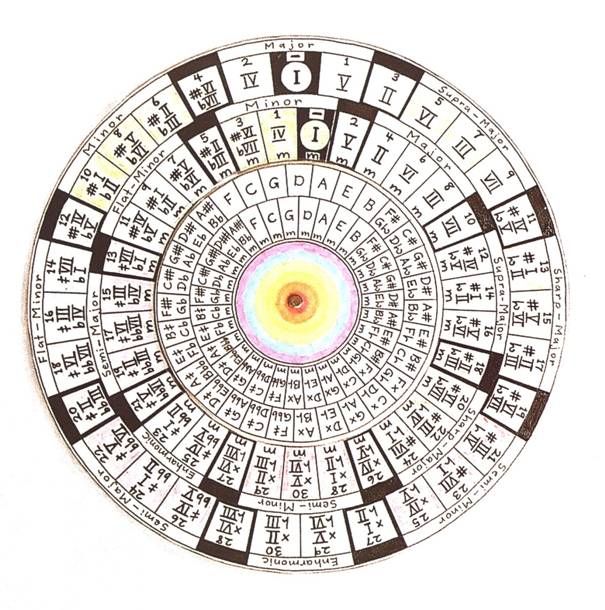Tag: permutations
-

premiere of hyperboles 5, Birmingham
Ellen Fallowfield and I outed the latest version of my hyperboles project last weekend at the Crosscurrents Festival in Birmingham. After two days of intense rehearsals and development it was a real pleasure to play in the Dome of the Bramall Music Building. Scott Wilson and Annie Mahtani’s team are continuing and developing the Birmingham Electroacoustic Sound Theatre tradition…
-

using auto-sequence to order chords: part 1
slippery chicken’s automatic chord sequencing algorithm creates an ordering for a set-palette’s sets (or chords) based on user-given dissonance and spectral centroid envelopes. The terms set and chord here will be used interchangeably to mean essentially the same thing (a collection of pitches to be used harmonically), though in both music theory and in slippery…
-

using auto-sequence to order chords: part 2
Back to part 1 auto-sequence examples and analysis The following examples process a set-palette created from a harmonic reduction by Emilios Cambouropoulos of Messiaen’s Quartet for the End of Time (Quartet VII).* The examples intermingle explanations of Common Lisp code and print statements with music notation output created directly from calls to slippery chicken’s Common Music Notation…
-

Keep it Simple: Complex Rhythmic Notation in Common Lisp
No, this isn’t a polemic against complex rhythmic notation or the New Complexity. Since the 80s I’ve been a fan of such music, even if as a composer I don’t generally employ its techniques. Most of the arguments against “impenetrable” rhythmic complexity have been demolished by the simple passage of time coupled with a continued interest in…
-

for rei as a doe
My 40-minute algorithmic composition for piano and computer came out on the Aural Terrains label this month. Rei Nakamura premiered it in London (partial version) and Stockholm (complete version) in 2012. Karin Schistek played it in Bangkok, Trento (Italy), and Edinburgh before we took to the Reid Studio to record it on March 3rd 2013. Booklet text…

